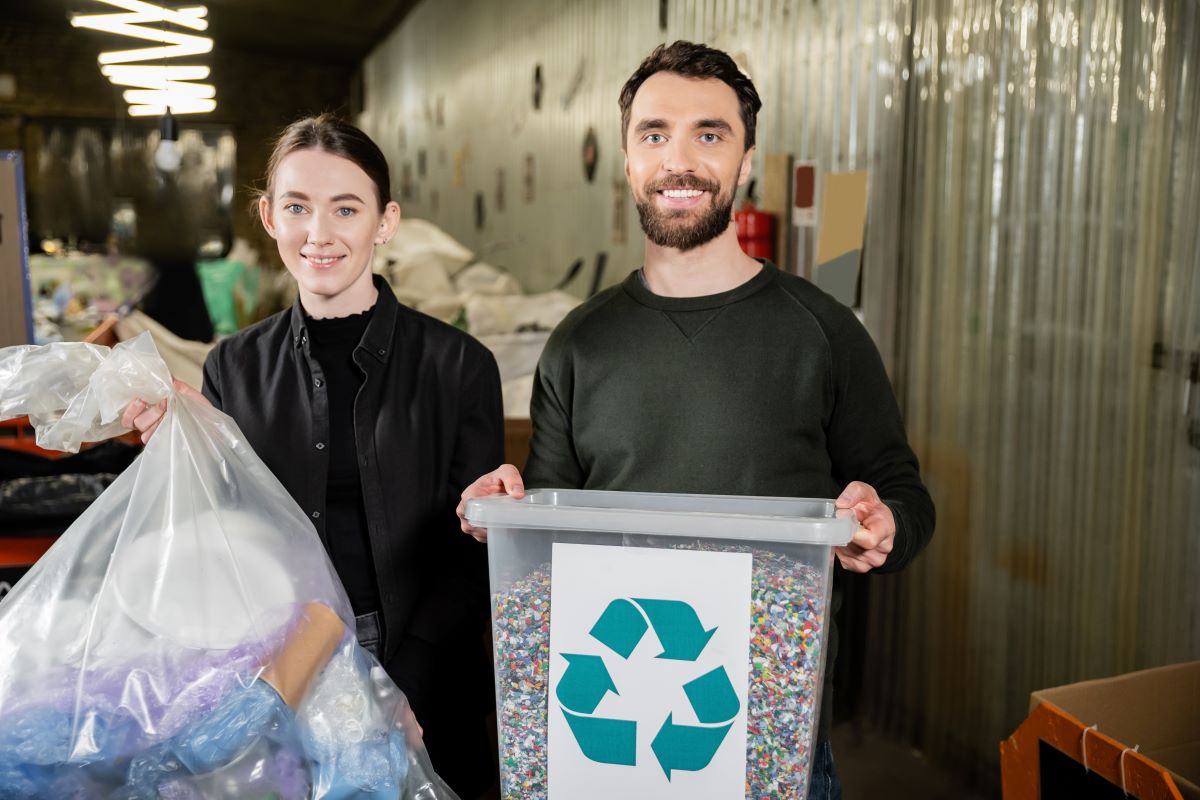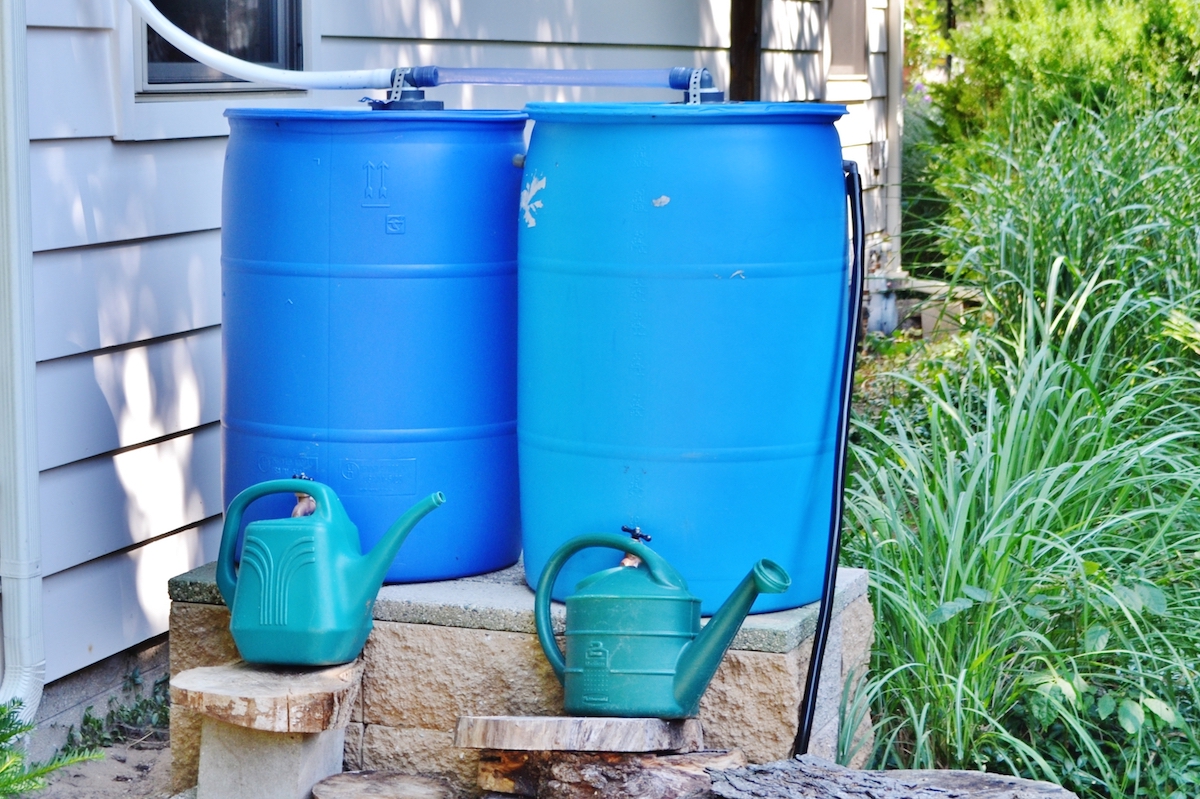Most of us recycle on a day-to-day basis. However, what most don’t know is what happens once the recycling leaves our garbage bin. Where does it go? Does it get separated? How much of it is actually recycled? Why should we even recycle anyway? To get these answers and more, read on to discover everything you need to know about recycling.
What is Recycling?
Recycling involves recovering material from waste and converting it into new products.
How Do We Recycle Materials?
Step 1: Collection
The first step in recycling is the collection. There are several methods for collecting recyclable material, including curbside collection, drop-off centres and refund programs.
An essential distinction in the collection of recyclable materials is the difference between single-stream and multi-stream collection. Single-stream collection involves the individual putting all different recyclable materials into one container to be separated later at a processing centre. Multi-stream collection requires residents to separate their waste into different bins before it is collected.
Recycling collection varies greatly depending on the country and city. In Toronto, for example, residents put all recycling in one blue bin. In contrast, in Switzerland, citizens must sort out all materials into separate containers and take them to recycling centres. At this point, workers direct contaminated recycling to landfills.
Step 2: Processing
Once recyling arrives at the processing centre, recycling workers sort and clean the material. The work involved at this stage is different depending on how the waste has been collected. If consumers have already separated the source material, then minimal work is required to remove contaminants. If they have not separated it, then all materials must be painstakingly sorted and cleaned.
Step 3: Manufacturing
The final step in the recycling process is to use recycled materials to manufacture new products. Many products, including recycled paper, aluminum cans and glass bottles, can be produced from recycled items.
Why is Recycling Important?
Environmental Benefits
Saves Energy and Reduces Greenhouse Gas Emissions
Converting recycled material into new products uses considerably less energy than producing new products from raw materials. Stanford University estimates that one ton of recycled aluminum uses 14,000 kWh less energy than sourcing raw materials.
Since recycling uses less energy, it also emits fewer greenhouse gases, which helps tackle climate change. The 14,000 kWh of energy saved by recycling one ton of aluminum also saves 10.9 tons of carbon dioxide from being emitted into the atmosphere. This amount of carbon dioxide is equivalent to the carbon dioxide emitted by two average-sized passenger cars being driven for one year.
Saves Space in Landfill
Recycling prevents unnecessarily filling landfills, saving space for materials that we cannot repurpose and need to be disposed of.
Stopping waste from entering landfills is critical, as we are running out of landfill space to store garbage worldwide. Presently, around 2 billion tons of trash end up in landfills each year, enough to fill 800,000 Olympic-sized swimming pools. However, the World Bank estimates that this number will increase to 3.4 billion by 2050 if current conditions persist.
Today, wealthy nations send vast amounts of waste to Southeast Asian countries to dispose of in their landfills. However, they are increasingly starting to reject it as their landfills fill up. The situation is so severe that Ontario, for example, will run out of waste disposal capacity by 2032.
Therefore, the world must begin recycling more to reduce the burden on already overflowing landfill sites.
Conserves Earth’s Natural Resources
Recycling recovers material from waste and converts it into a new product. If we do not recover this material, we must extract new natural resources to create the same product. Therefore, the more we recycle, the less of the earth’s finite natural resources we use.
For example, each ton of paper recycled can save seventeen trees, while recycling metal means less environmentally-damaging metal ore mining.
Reduces Air Pollution
The fact that recycling reduces the extraction of natural resources also helps reduce air and water pollution. Currently, air pollution is responsible for 4.2 million deaths per year. Therefore, we must reduce the amount we pollute.
Economic Benefits
Saves Money
Recycling and reusing materials reduce the need for costly resource extraction to create materials from scratch.
An excellent example of this is plastic, which is created using coal, natural gas, and crude oil. Currently, Canada only recycles nine percent of its plastic material, meaning it spends billions to produce plastic that could be recycled and reused. The Canadian government has estimated that if the country continues to recycle so little plastic, it will cost the economy $11.1 billion by 2030.
Recycling can also save individuals money. For instance, if you recycle food waste, you can use it as compost in your garden and save on purchasing compost.
Creates Employment
Another economic benefit of recycling is that it creates employment. For instance, in California, recycling infrastructure employs over 84,000 people and generates US$14.2 billion in annual revenue.
What Can We Recycle?
Plastic
Plastic is a common material that we can recycle. We can use recycled plastic in various products, including new bottles and containers, playground equipment and lawn furniture.
However, while virtually all types of plastics can be recycled, we only recycle 9% of plastic globally because the process is expensive and complicated. As a result, most of the 8.3 billion tons of plastic that have been created in the last six decades has ended up as trash. Much of it finishes in our oceans, where 8 million tons of plastic end up each year. Plastic takes up to 400 years to degrade, meaning that we live on a planet suffocating in plastic waste.
Canada recycles only 9% of the plastic it produces. In 2016, the country had 3.3 million tons of plastic waste, equivalent to the weight of 24 CN towers.
Aluminum
Unlike plastic, aluminum is a recycling success story. It is 100% recyclable and retains its properties indefinitely. As a result, the global average recycling rate of aluminum is 60%. Almost 75% of aluminum ever produced is still in use.
By and large, recycled aluminum is used to make new cans. However, we can also use it to make things like building facades, airplane parts and bicycles.
Economically, aluminum cans are more valuable than plastic and other materials since they are easier to recycle. As a result, they render many recycling programs financially viable and subsidize the recycling of less valuable materials.
Canada is the world’s fourth-largest aluminum manufacturer – producing 2.9 million tons in 2018. Around 90% of the aluminum used in the construction and automotive industries in Canada is recycled.
Paper and Cardboard
Paper and cardboard are two additional materials that we can recycle. Generally, they are split into two categories – nondurable goods and containers/packaging. Nondurable goods include newspapers, tissue paper, office paper and paper plates and cups. In contrast, containers/packaging includes milk cartons and corrugated boxes.
Paper and cardboard are highly recyclable. In 2018, the United States recycled 68.2% of paper and cardboard, totalling 46 million tons. Corrugated boxes had the highest rate, at 96.5%.
We use recycled paper in numerous products, including toilet paper, tissue paper, stationery and magazines. We use recycled cardboard to make more cardboard products, such as cereal boxes.
Glass
Another material that we can recycle is glass. Like aluminum, glass is 100% recyclable and can be recycled continually without a drop in quality. Generally, we convert recycled glass into more glass bottles. However, we can also use it in items like flooring, countertops and landscaping stones.
However, even though glass is 100% recyclable, the rate of recycling varies widely depending on the nation. European countries such as Germany and Switzerland recycle 90% of the glass they produce. In the United States, the rate is around 31%.
This vast difference is primarily due to a difference in recycling techniques. Municipalities in the United States mostly use single-stream curbside collection. In contrast, multi-stream collection is the norm in European countries. As discussed above, the distinction between the two is that single-stream involves putting all different recyclable materials into one container to be separated later. In contrast, multi-stream requires residents to separate their waste into different bins before it is collected.
Multi-stream recycling requires a high level of customer education and is more expensive to operate than single-stream programs. However, glass in single-stream recycling often cannot be recycled as it is contaminated. Therefore, multi-stream recycling, standard in Europe, produces far superior results.
Electronic Waste
We can recycle everyday electronic products such as smartphones, laptops, televisions and printers. Recycling such products can recover plenty of valuable materials. For example, for every million cell phones recovered, 772 pounds of silver, 35,000 pounds of copper and 75 pounds of gold can be recovered. Globally, electronic waste produced annually is worth around $62.5 billion.
We produce 50 million tons of electronic waste globally each year. Canada alone produces 683,000 tons annually. However, despite the amount of electronic waste produced per year and the valuable materials present, we only recycle 20% of electronic waste each year.
The low level of electronic waste recycling is mostly down to the inconvenience of recycling it. Unlike other materials, you cannot simply place electronic waste in recycling boxes for collection. It must be taken to stores or specialist recycling facilities, which are often out of the way, and sometimes even charge for recycling. As a result, many people throw their devices into the trash to save the hassle and recycling cost.
Unfortunately, this results in vast amounts of electronic waste ending up in landfills, negatively affecting the environment. Furthermore, when electronic waste is buried in a landfill, toxic materials in the garbage can dissolve and leach through the landfill barrier, poisoning groundwater.
Conclusion: There is So Much Potential For More Effective Recycling
In conclusion, recycling is an activity that is vital for the health of our planet. We can recycle numerous materials to avoid unnecessarily using precious natural resources and filling up the world’s landfills needlessly. Clearly, we are recycling nowhere near enough material globally. If we want to avoid running out of landfill space and keep our planet from choking on waste, we must find ways to recycle much more material than we currently do.
For those of you in Ontario, check out Stewardship Ontario’s website for information on exactly what can be recycled in your area.


